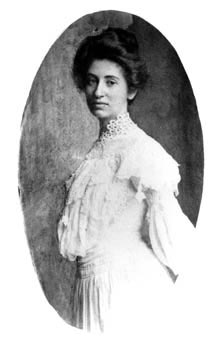
Mary Elizabeth Jane Colter was an American architect and designer. She was one of the very few female American architects in her day. She was the designer of many landmark buildings and spaces for the Fred Harvey Company and the Santa Fe Railroad, notably in Grand Canyon National Park. Her work had enormous influence as she helped to create a style, blending Spanish Colonial Revival and Mission Revival architecture with Native American motifs and Rustic elements, that became popular throughout the Southwest. Colter was a perfectionist, who spent a lifetime advocating and defending her aesthetic vision in a largely male-dominated field.

The Fred Harvey Company was the owner of the Harvey House chain of restaurants, hotels and other hospitality industry businesses alongside railroads in the Western United States. It was founded in 1876 by Fred Harvey to cater to the growing number of train passengers.

KUNM is a public radio station broadcasting on FM 89.9 MHz from high atop Sandia Crest, with broadcasts originating from the third floor of Oñate Hall, on the campus of the University of New Mexico (UNM) in Albuquerque, New Mexico.

Hotel Andaluz is a historic high-rise hotel in Downtown Albuquerque, New Mexico. It opened in 1939 as the Hilton Hotel, part of the Hilton Hotels chain. After operating under various names since the 1970s, the hotel was renovated and reopened under its current name in 2009. In 2019 it joined the Curio Collection by Hilton brand.

Winslow station is an Amtrak train station at 501 East Second Street in Winslow, Navajo County, Arizona, United States. It is served daily by Amtrak's Southwest Chief between Chicago, Illinois and Los Angeles, California. The Santa Fe Depot and La Posada Hotel Harvey House compound are the centerpiece of the La Posada Historic District.
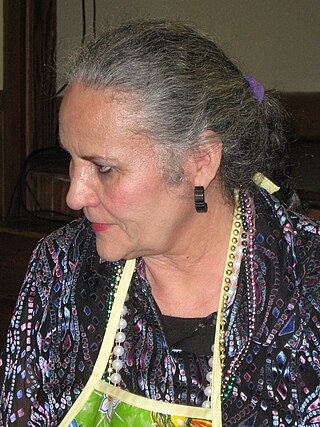
Denise Elia Chávez is a Chicana author, playwright, and stage director. She has also taught classes at New Mexico State University. She is based in New Mexico.

The Pueblo Revival style or Santa Fe style is a regional architectural style of the Southwestern United States, which draws its inspiration from Santa Fe de Nuevo México's traditional Pueblo architecture, the Spanish missions, and Territorial Style. The style developed at the beginning of the 20th century and reached its greatest popularity in the 1920s and 1930s, though it is still commonly used for new buildings. Pueblo style architecture is most prevalent in the state of New Mexico; it is often blended with Territorial Revival architecture.

The El Rey Court is located at 1862 Cerrillos Road in Santa Fe, New Mexico. This campus spans 5 acres and is located near what used to be Route 66. The property includes traditional adobe style buildings surrounded by gardens.
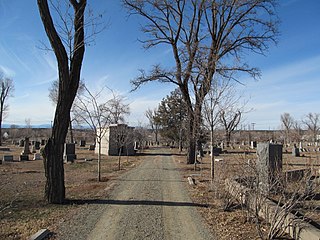
Fairview Cemetery is a graveyard in Santa Fe, New Mexico. It was for many years the only non-Catholic cemetery in the city. There are roughly 3,700 people buried there. The graveyard is listed on the National Register of Historic Places.
The Phoenician Resort is a luxury resort in Scottsdale. Built on the grounds of the historic Jokake Inn, the resort opened in 1988, a project of financier Charles Keating. The resort has been awarded a AAA Five-Diamond rating.

Mysterious New Mexico: Miracles, Magic, and Monsters in the Land of Enchantment is a 2014 collection of thirteen investigations conducted by author Ben Radford into cases involving claims of the paranormal occurring in or with significant connections to New Mexico.
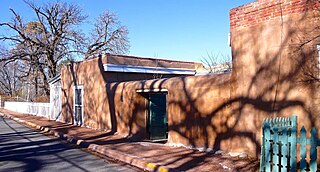
El Zaguan, at 545 Canyon Rd. in Santa Fe, New Mexico, is a historic complex started in 1854. It was listed on the National Register of Historic Places in 2008. The listing included two contributing buildings, three contributing structures, two contributing objects, and a contributing site on 1.8 acres (0.73 ha).
The Hilton Santa Fe Historic Plaza, formerly known as the Santa Fe Hilton Hotel Inn, is a hotel that opened in 1973 in the historic center of Santa Fe, New Mexico. The hotel was built on a four-acre parcel that included two 18th-century adobe houses associated with one of the city's oldest families. The Nicholas Ortiz III house was converted into the hotel's gift shop, and the Antonio Jose Ortiz house became the hotel's restaurant and lounge.

A special election to determine the member of the United States House of Representatives for New Mexico's 3rd congressional district was held on May 13, 1997. Republican Bill Redmond defeated Democrat Eric Serna in a result which flipped this heavily Democratic seat to the Republican column. Redmond replaced Bill Richardson, who resigned from his seat in the House after he was appointed by Bill Clinton to be the United States Ambassador to the United Nations.

The Alvarado Hotel was a historic railroad hotel which was one of the most famous landmarks of Albuquerque, New Mexico. It was built in 1901–02 by the Atchison, Topeka and Santa Fe Railway and was operated by the Fred Harvey Company until 1970. With 120 guest rooms, it was the largest of all the Harvey hotels. Its demolition by the railroad in 1970 was described by preservationist Susan Dewitt as "the most serious loss of a landmark the city has sustained" and helped mobilize stronger support for historic preservation efforts in the city.

The Santa Fe Depot was a historic railroad station in Albuquerque, New Mexico, which burned down in 1993. It was originally built by the Atchison, Topeka and Santa Fe Railway in 1902 along with the neighboring Alvarado Hotel. After the hotel was razed in 1970, the depot remained in use by ATSF and then Amtrak passenger trains. The building was listed on the New Mexico State Register of Cultural Properties in 1981 and was designated an Albuquerque Historic Landmark.

The Castañeda Hotel is a historic railroad hotel located in Las Vegas, New Mexico. It was built in 1898 and 1899 by the Atchison, Topeka and Santa Fe Railway, and was operated by the Fred Harvey Company until 1948. After being mostly vacant for many years, the hotel was restored and reopened in 2019. The Castañeda was listed on the New Mexico State Register of Cultural Properties in 1974 and the National Register of Historic Places in 1979 as a contributing property in the Railroad Avenue Historic District. It is located adjacent to the Las Vegas railroad station.

The Downtowner Motor Inn is a historic motel on Central Avenue in Downtown Albuquerque, New Mexico. Opened in 1965 as the 46th property of the Memphis, Tennessee-based, Downtowner Motor Inn chain, which operated economy-priced motels in city centers across the U.S. In 1972, the motel was sold and became a Quality Inn. It has also operated as a Ramada and most recently as the Hotel Blue, which closed in 2017. In 2020, it was announced that the motel would be renovated by the Los Angeles–based ARRIVE Hotels & Restaurants to reopen in 2022. These plans were delayed by the COVID-19 pandemic, and ARRIVE Hotels was purchased by a different hotel company, Palisociety, in 2021. After several years of delays, the project was reported in 2023 to be "back on track" with a targeted completion date of December 2024.
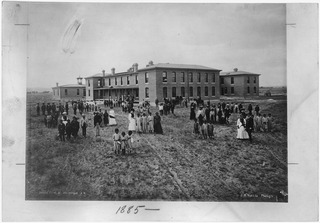
Albuquerque Indian School (AIS) was a Native American boarding school in Albuquerque, New Mexico, which operated from 1881 to 1981. It was one of the oldest and largest off-reservation boarding schools in the United States. For most of its history it was run by the Bureau of Indian Affairs (BIA). Like other government boarding schools, AIS was modeled after the Carlisle Indian Industrial School, using strict military-style discipline to strip students of their native identity and assimilate them into white American culture. The curriculum focused on literacy and vocational skills, with field work components on farms or railroads for boys and as domestic help for girls. In the 1930s, as the philosophy around Indian education changed, the school shifted away from the military approach and offered more training in traditional crafts like pottery, weaving, and silversmithing.


















